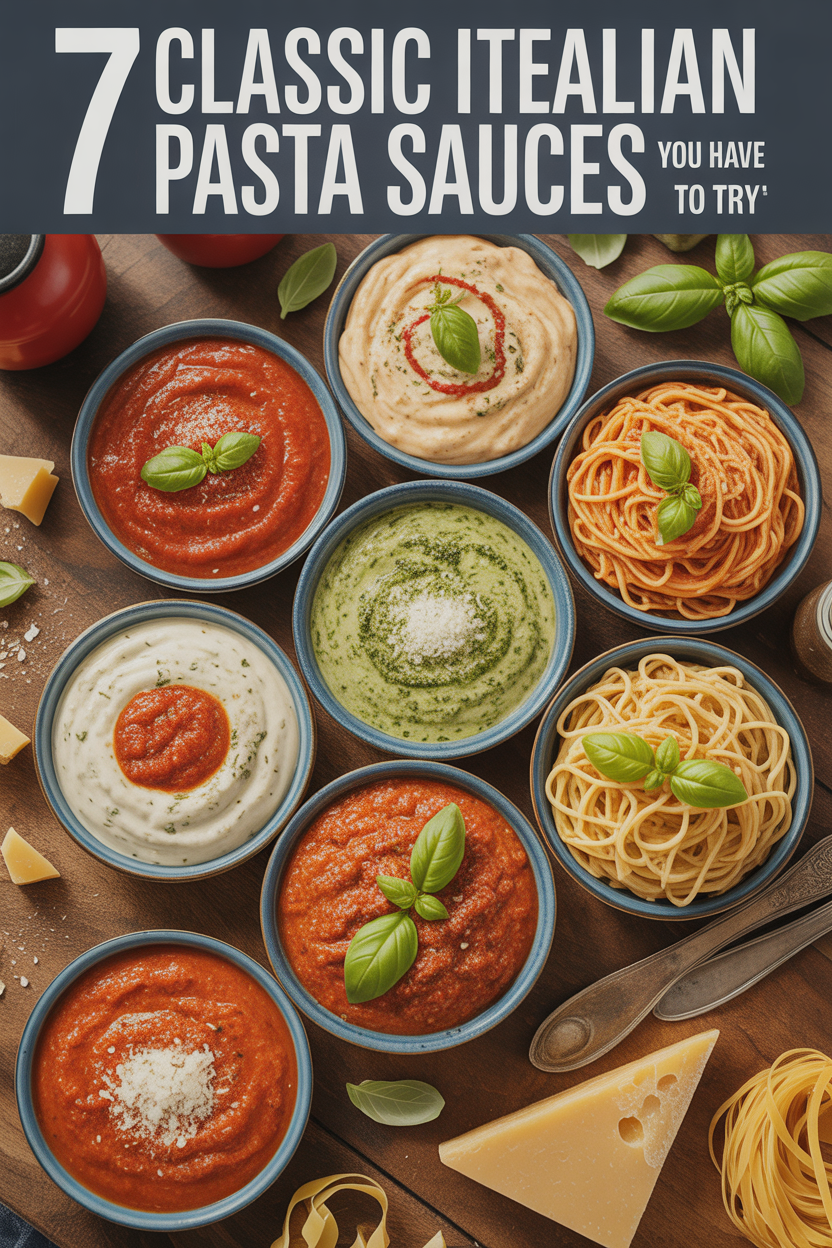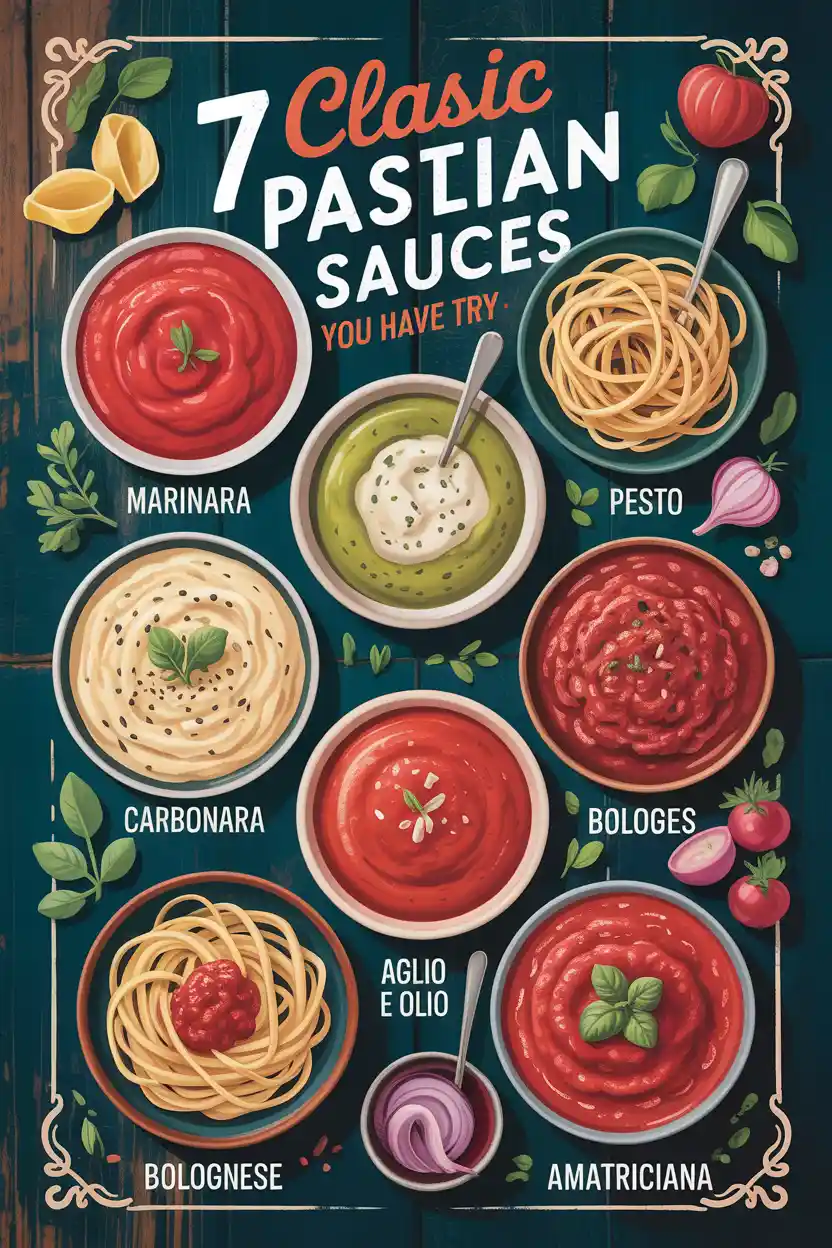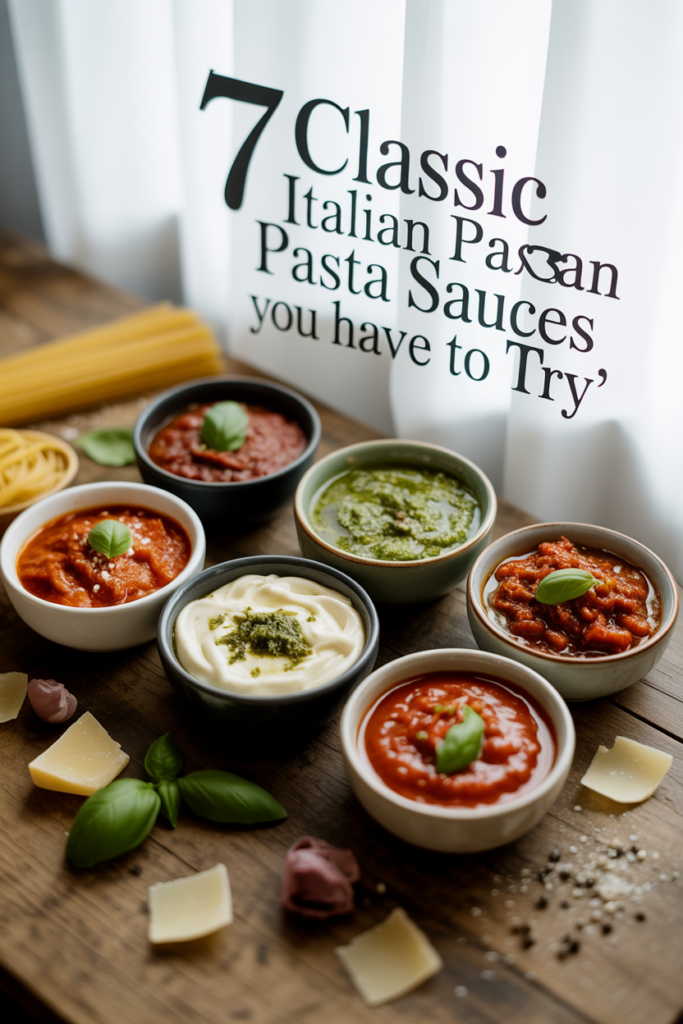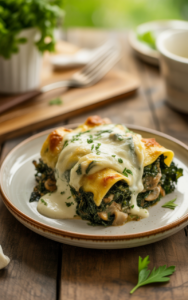7 Classic Italian Pasta Sauces You Have to Try
Introduction
Italian cuisine is beloved all over the world, and if there’s one thing that symbolizes comfort, tradition, and passion for food, it’s pasta. But pasta alone is nothing without the sauce that brings it to life. From the silky smoothness of Alfredo to the robust tang of Marinara, Italian pasta sauces tell stories of history, family, and culture. In this post, we’ll explore seven classic Italian pasta sauces you absolutely need to try—whether you’re a beginner cook or a seasoned foodie. Along the way, you’ll discover their origins, key ingredients, cooking tips, and ways to enjoy them at their very best.
1. Marinara Sauce
Marinara is one of the most iconic Italian sauces, simple yet bursting with flavor. Traditionally made with tomatoes, garlic, onions, and herbs like basil and oregano, this sauce is quick to prepare and incredibly versatile.https://recipescrea.com/easy-crockpot-chicken-fajitas/
Origins
The name marinara comes from the Italian word for “sailor.” Legend has it that sailors returning from sea would cook this quick tomato sauce because it used ingredients that stored well and could be prepared in little time.

Key Ingredients
- Ripe plum tomatoes (preferably San Marzano)
- Olive oil
- Garlic
- Onion
- Fresh basil
- Oregano
- A pinch of chili flakes (optional)
Cooking Tips
- Use San Marzano tomatoes for authentic sweetness and acidity.
- Simmer gently for 20–30 minutes to develop flavor without losing freshness.
- Add a splash of red wine for extra depth.
How to Use
Marinara pairs beautifully with spaghetti, penne, or as a base for pizza. It can also be used for dipping breadsticks or topping chicken parmigiana.
2. Bolognese (Ragù alla Bolognese)
Bolognese is the king of hearty sauces. Originating from Bologna, this rich ragù is meat-based and slow-cooked to develop deep, complex flavors.
Origins
First documented in the 18th century, ragù alla Bolognese has become a global favorite. In Bologna, it’s traditionally served with tagliatelle, not spaghetti.
Key Ingredients
- Ground beef and pork (sometimes veal)
- Onion, celery, carrot (soffritto)
- Tomato paste or passata
- Red wine
- Milk or cream
- Olive oil
Cooking Tip
The secret to a great Bolognese is patience. Letting it simmer for 2–3 hours ensures the flavors meld together beautifully.
Common Mistakes
- Using only beef: A mix of pork and beef creates better depth.
- Skipping milk: It softens the acidity of tomatoes and creates balance.
- Rushing: This sauce needs time to become silky and rich.
How to Use
Best with fresh tagliatelle, lasagna sheets,
3. Alfredo Sauce
Alfredo is the epitome of creamy indulgence. Though its Americanized version often uses heavy cream, the original Roman recipe was far simpler.
Origins
Created in Rome by Alfredo di Lelio in the early 1900s, the original version used just butter and Parmigiano-Reggiano, emulsified with pasta water.
Key Ingredients
- Butter
- Parmigiano-Reggiano
- Pasta water
Modern Twist
In the U.S., Alfredo often includes heavy cream, garlic, and even chicken or shrimp.
Cooking Tip
- Don’t overheat the cheese; it should melt gently to avoid clumping.
- Use freshly grated Parmigiano for the best flavor.
How to Use
Traditionally with fettuccine, but also delicious with penne or even gnocchi.
4. Pesto alla Genovese
Fresh, vibrant, and aromatic, pesto hails from Genoa in northern Italy. Unlike tomato-based sauces, pesto is uncooked and bursting with freshness.
Origins
Dating back to the 16th century, pesto gets its name from the Italian word pestare, meaning “to crush,” referring to how it was traditionally made with a mortar and pestle.

Key Ingredients
- Fresh basil
- Pine nuts
- Garlic
- Olive oil
- Parmigiano-Reggiano and Pecorino cheese
Cooking Tips
- Always toast the pine nuts lightly to enhance flavor.
- Never cook pesto; toss it with warm pasta off the heat.
- Use a mortar and pestle for the most authentic texture.
How to Use
Perfect with trofie pasta, linguine, or spread over bruschetta.
5. Carbonara
Few dishes are as comforting as a plate of carbonara. Creamy yet without cream, this Roman classic is all about balance.
Origins
Carbonara’s history is debated, but it likely emerged in the mid-20th century. Some believe it was inspired by coal miners (carbone means coal in Italian).
Key Ingredients
- Guanciale (cured pork cheek)
- Eggs (only yolks for richness)
- Pecorino Romano
- Black pepper
Cooking Tip
The key is to add the egg mixture off the heat so the eggs don’t scramble but create a silky sauce.
Common Mistakes
- Using cream: Authentic carbonara never includes cream.
- Bacon instead of guanciale: Bacon works in a pinch, but guanciale gives authentic depth.
- Overcooking eggs: Add them last and off the heat.
How to Use
6. Arrabbiata Sauce
If you love spice, Arrabbiata is the sauce for you. The name means “angry” in Italian, thanks to the heat from red chili peppers.
Origins
A Roman favorite, arrabbiata became popular in the 20th century as a fiery twist on marinara.

Key Ingredients
- Tomatoes
- Garlic
- Olive oil
- Red chili peppers
- Parsley
Cooking Tips
- Adjust chili levels based on your spice tolerance.
- Use fresh chili peppers for brighter flavor.
- Simmer slowly to allow the heat and tomatoes to balance.
How to Use
Often paired with penne, arrabbiata is quick, zesty, and perfect for a bold weeknight meal.
7. Amatriciana
Another Roman treasure, Amatriciana is a rich, savory sauce featuring guanciale and pecorino.
Origins
From the town of Amatrice, this sauce was originally made without tomatoes, but later adapted to include them.
Key Ingredients
- Guanciale
- Pecorino Romano
- Tomatoes
- Olive oil
- White wine
Cooking Tips
- Render the guanciale slowly to release flavor.
- Use Pecorino Romano generously for sharpness.
- Balance acidity with a pinch of sugar if tomatoes are too tangy.
How to Use
Traditionally paired with bucatini, but also works well with spaghetti.
Additional Serving Suggestions
- Marinara: Add capers and olives for a puttanesca variation.
- Bolognese: Top with a dollop of ricotta for extra creaminess.
- Alfredo: Add lemon zest for freshness.
- Pesto: Try sun-dried tomato pesto (pesto rosso) for variety.
- Carbonara: Sprinkle extra black pepper tableside.
- Arrabbiata: Serve with garlic bread to balance the heat.
- Amatriciana: Pair with a robust Italian red wine.
Nutritional and Health Aspects
While indulgent, Italian sauces can also be balanced:
- Tomato-based sauces (Marinara, Arrabbiata, Amatriciana) are rich in antioxidants like lycopene.
- Pesto offers healthy fats from olive oil and pine nuts.
- Carbonara and Alfredo are higher in fat but can be enjoyed in moderation.
- Adding vegetables to these sauces increases fiber and nutrients.
Frequently Asked Questions (FAQ)
Q: Can I freeze these sauces?
Yes. Marinara, Bolognese, and Arrabbiata freeze very well. Cream-based sauces like Alfredo are best eaten fresh.https://www.pinterest.com/CreaVibe_/




